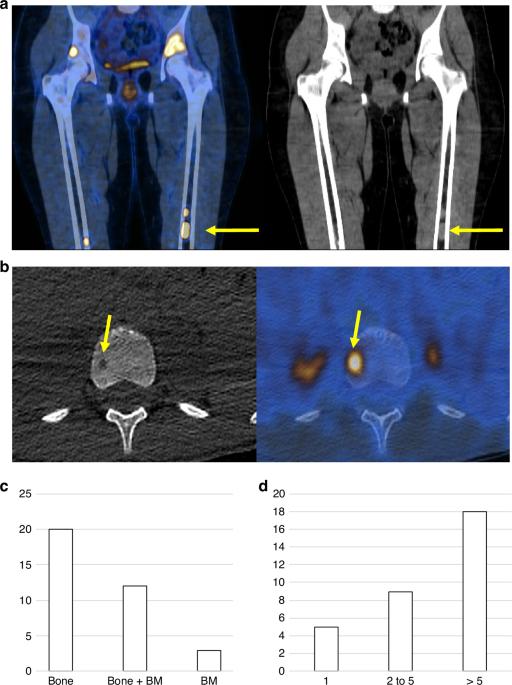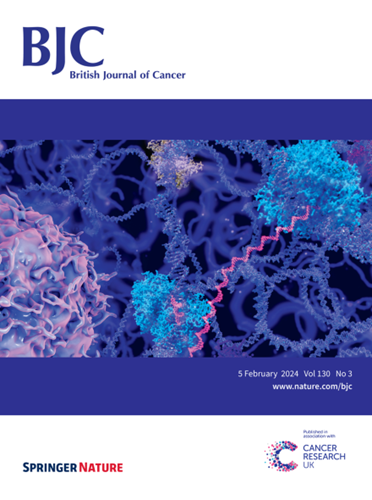Role of 18F-FDG-PET/CT in the initial staging of very high-risk Ewing Sarcoma in a prospective multicentric Phase II Study: Is there still a place for bone marrow sampling?
IF 6.4
1区 医学
Q1 ONCOLOGY
引用次数: 0
Abstract
The Ewing Sarcoma Family of Tumors (ESFT) constitutes a group of rare malignancies, wherein approximately one-third of cases exhibit metastatic spread, particularly impacting prognosis when bone and/or bone marrow (BM) are involved. Primary extra-pulmonary metastatic ESFT often necessitates intensified therapeutic approaches. Accurate staging plays a pivotal role in clinical decision-making, with fluorine-18-fluorodeoxyglucose-positron emission tomography/computed tomography (PET/CT) currently serving as a non-invasive modality for assessing ESFT’s BM extent. In the French phase II COMBINAIR3 (NCT03011528) study, a comprehensive approach for patients with extra-pulmonary ESFT metastasis was evaluated. We prospectively compared the efficacy of PET/CT to BM aspiration and biopsy (BMAB) analysis in patients undergoing initial staging. Among the 42 patients analyzed (median age 14 y, 2:1 male/female ratio), 45% presented with pelvic primary tumors and 83% had bone/BM involvement at diagnosis. Our findings showed PET/CT had 100% specificity and 83.3% sensitivity in detecting initial BM involvement. Overall, PET/CT correctly classified 92.8% of patients, reaching 100% accuracy in patients identified with bone involvement, thus surpassing the standard BMAB. These results suggest that the conventional use of BMAB in the initial staging of high-risk ESFT patients can be omitted, promoting PET/CT as a non-invasive alternative, thus improving staging accuracy and treatment decisions in ESFT management.

在一项前瞻性多中心 II 期研究中,18F-FDG-PET/CT 在极高危尤文肉瘤初始分期中的作用:骨髓取样还有用吗?
背景:尤文肉瘤家族肿瘤(ESFT)是一组罕见的恶性肿瘤,其中约三分之一的病例表现为转移性扩散,尤其是累及骨和/或骨髓(BM)时影响预后。原发性肺外转移性 ESFT 通常需要加强治疗。准确的分期在临床决策中起着举足轻重的作用,氟-18-氟脱氧葡萄糖正电子发射断层扫描/计算机断层扫描(PET/CT)是目前评估ESFT骨髓范围的一种无创方式:在法国的 COMBINAIR3 (NCT03011528) II 期研究中,对肺外 ESFT 转移患者的综合治疗方法进行了评估。我们对接受初步分期的患者进行了前瞻性比较,比较了 PET/CT 与 BM 抽吸和活检(BMAB)分析的疗效:在分析的42名患者中(中位年龄14岁,男女比例为2:1),45%的患者为盆腔原发肿瘤,83%的患者在确诊时骨骼/骨髓受累。我们的研究结果表明,PET/CT 在检测最初的骨髓受累方面具有 100% 的特异性和 83.3% 的敏感性。总体而言,PET/CT对92.8%的患者进行了正确分类,对骨受累患者的准确率达到100%,因此超过了标准的BMAB:讨论:这些结果表明,在对高危 ESFT 患者进行初始分期时,可以省略传统的 BMAB,而将 PET/CT 作为一种无创替代方法加以推广,从而提高 ESFT 管理中的分期准确性和治疗决策。
本文章由计算机程序翻译,如有差异,请以英文原文为准。
求助全文
约1分钟内获得全文
求助全文
来源期刊

British Journal of Cancer
医学-肿瘤学
CiteScore
15.10
自引率
1.10%
发文量
383
审稿时长
6 months
期刊介绍:
The British Journal of Cancer is one of the most-cited general cancer journals, publishing significant advances in translational and clinical cancer research.It also publishes high-quality reviews and thought-provoking comment on all aspects of cancer prevention,diagnosis and treatment.
 求助内容:
求助内容: 应助结果提醒方式:
应助结果提醒方式:


